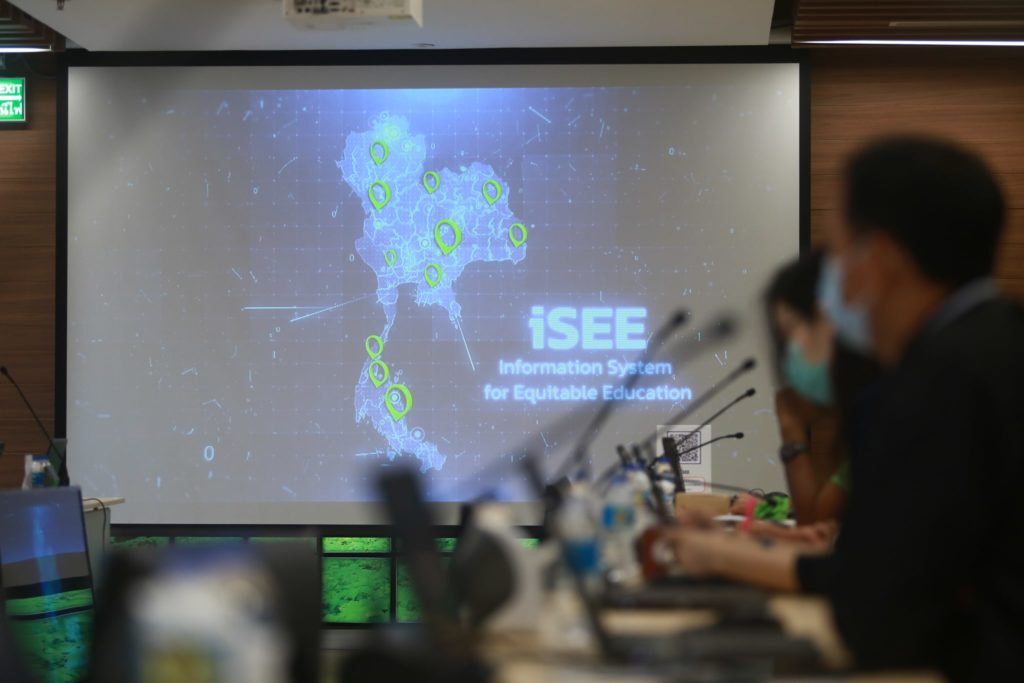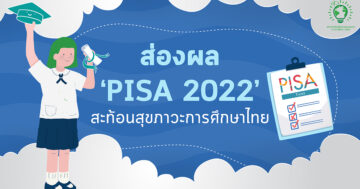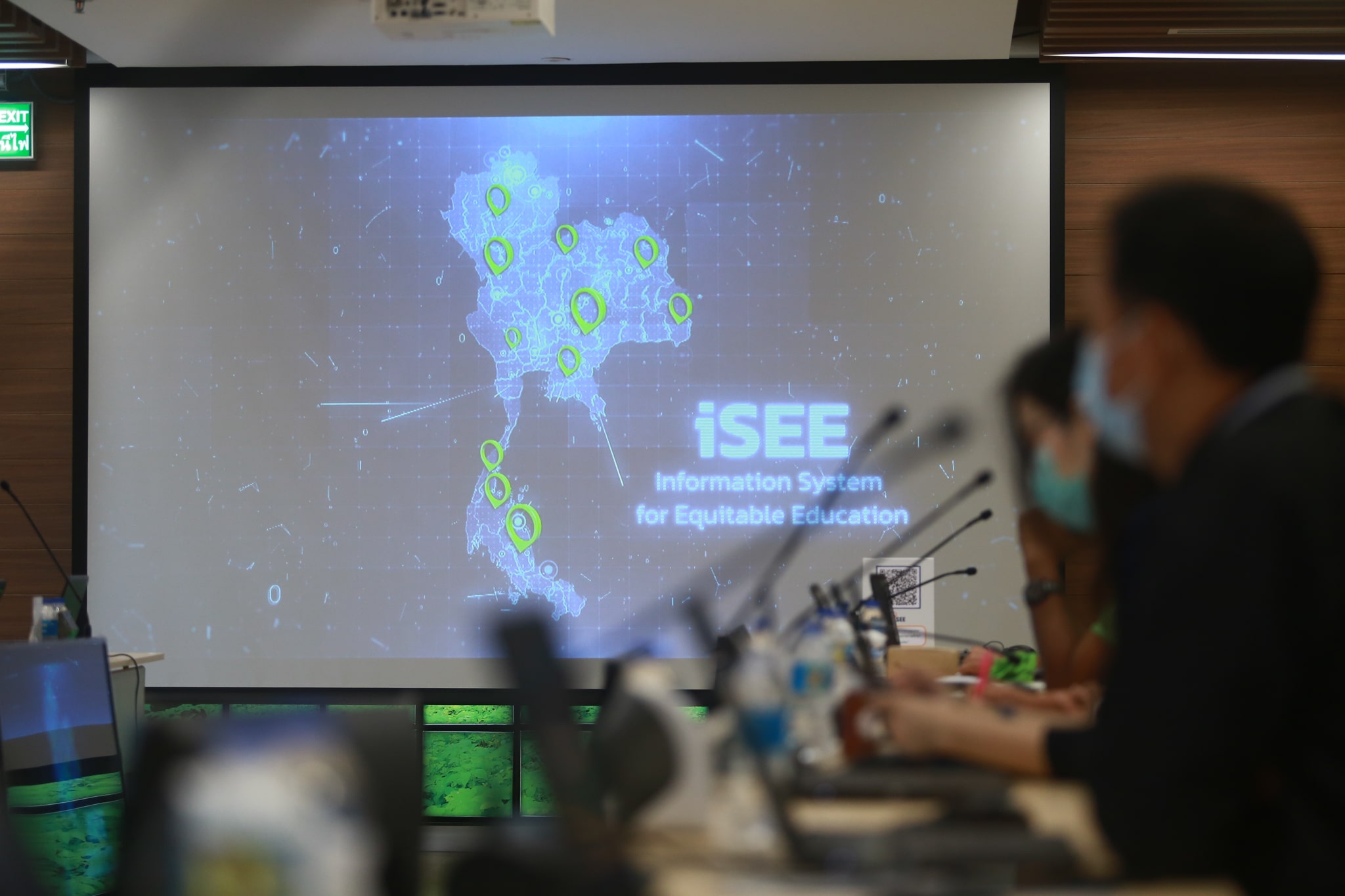
The Equitable Education Fund (EEF) launched the iSEE 2.0 system, an innovative system to reduce educational inequality as a tool for x-ray data at the local level in all dimensions, helping Thai society to see all children in the country through the 5 main Goals while Startup Thailand confirmed the power of education information to help and change lives, suggesting that all sectors used the iSEE software to build the equitable education.
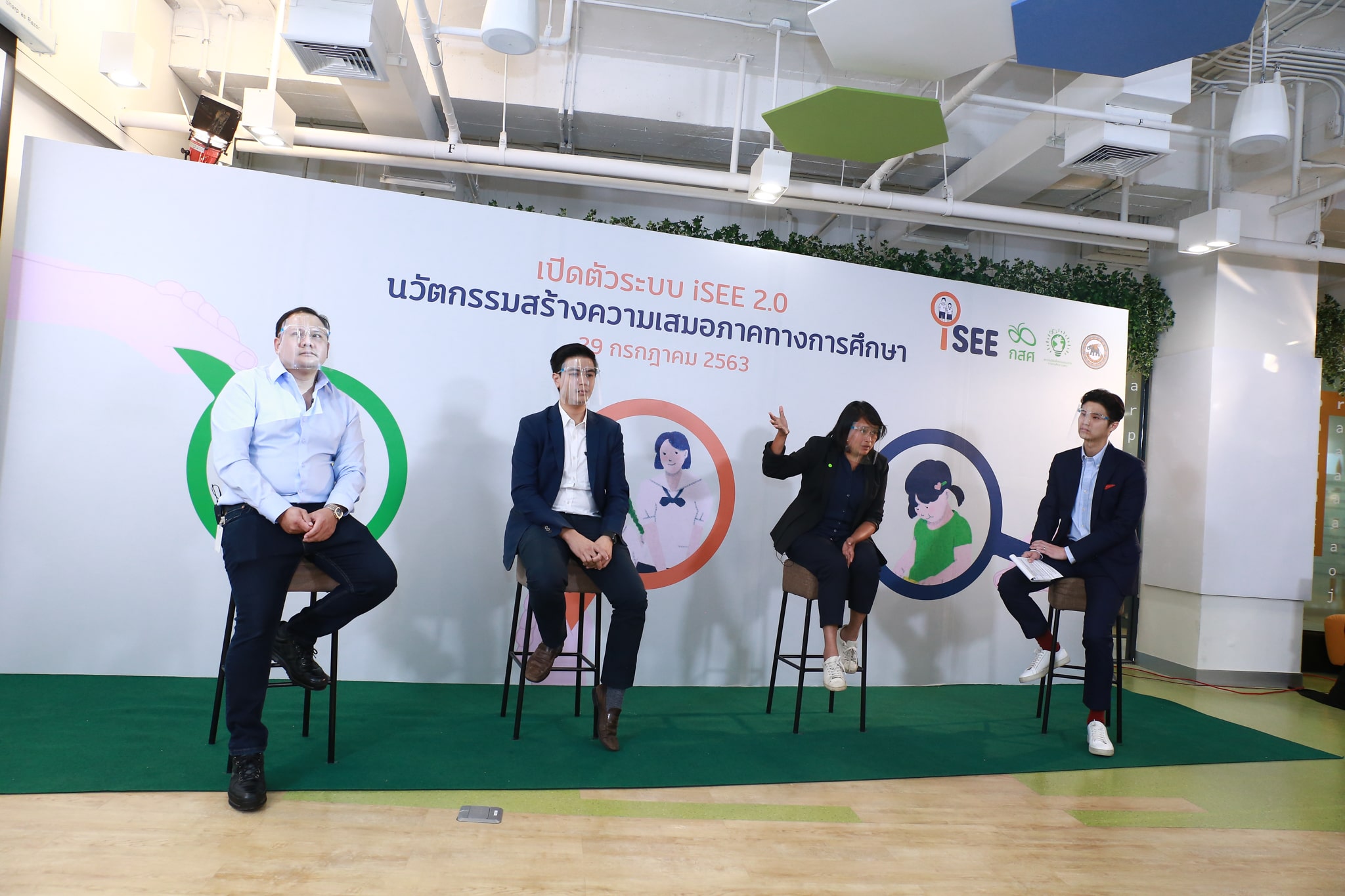
On July 29th 2020, the Equitable Education Fund (EEF) held a press conference to launch the “iSEE 2.0 system, an innovation to build the equitable education.” It was an important tool for helping children reach the accurate, precise, and real problems, and organizing a forum on “EdTech and Data Activism; the case study of iSEE system and mobilization for the equitable education.

Dr. Kraiyas Phatrawat, Deputy Managing Director of the Equitable Education Fund (EEF)
Dr. Kraiyas Phatrawat, Deputy Managing Director of the Equitable Education Fund (EEF), said that EEF has researched and developed a new version of its Information System for Equitable Education: iSEE, which was a big individual database and covering the target group of more than 4 million underprivileged and disadvantaged children and youths by linking information on children and families with the big databases of 6 ministries, including the Ministry of Education, the Ministry of Finance, the Ministry of the Interior, the Ministry of Social Development and Human Security, the Ministry of Labor, the Ministry of Public Health, and the Geographic Information System (GIS).
In order to help policymakers “see” the situation of inequality clearly in all areas of the country, it was also a tool for various agencies and partners with a mission to reduce inequality in education in the future. The iSEE system was a big database in education that would enhance the search and thorough screening of youth both inside and outside the education system. The survey would be conducted at the national, regional, provincial, district, sub-district, school, and individual level to follow up on the education situation, attendant rate, average household income and improve the quality of life of children in the future etc. to provide assistance to the children in a timely manner.
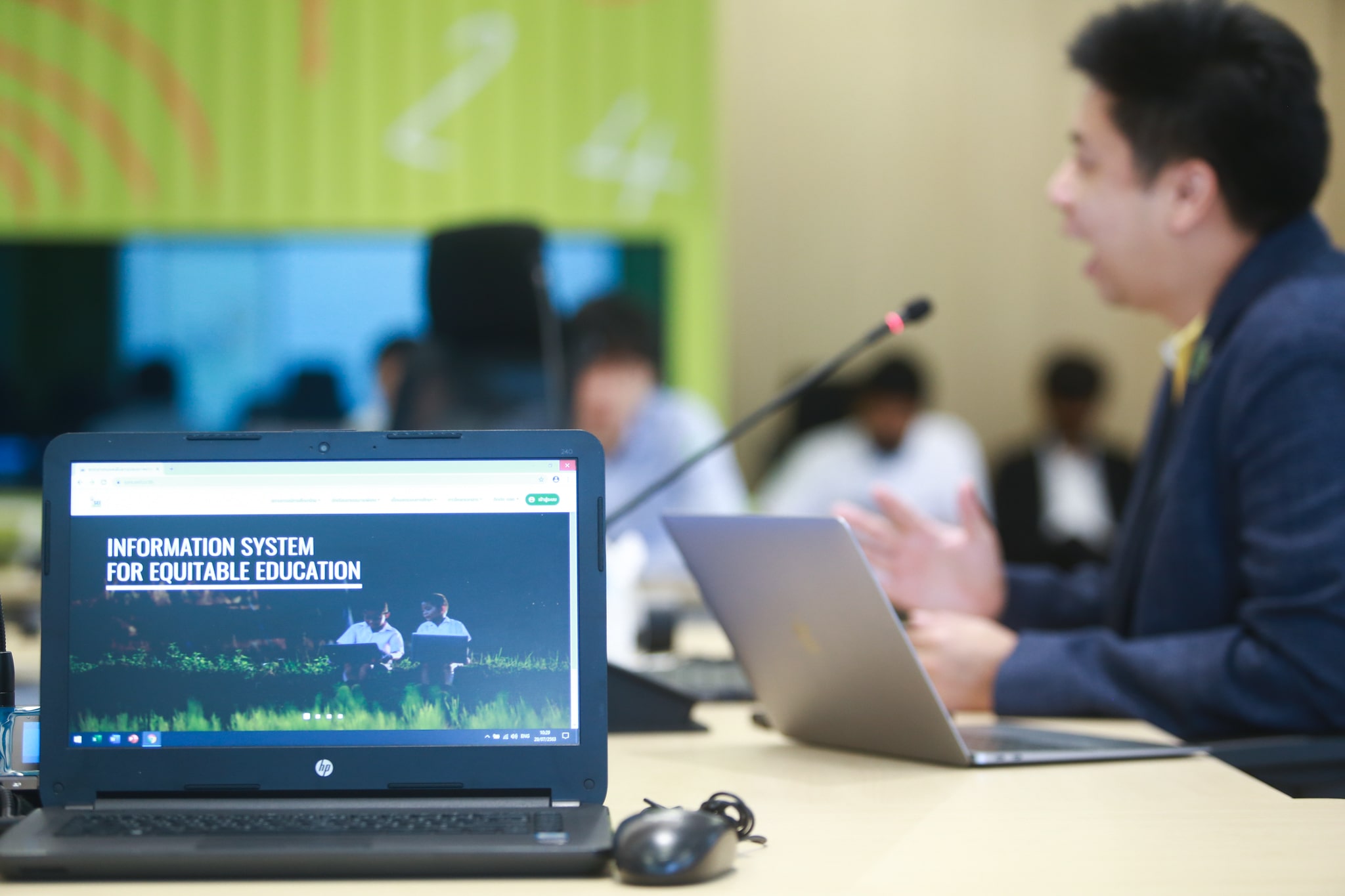
“The highlight of the iSEE system was the display of child and adolescent health and malnutrition information, household status information, child and youth welfare information, school travel information, school infrastructure information. From the data processing, it was found in 2019 that half of the students in the education system were lost after graduating from the junior high school. It also found that 3 provinces, namely Tak, Bangkok, and Mae Hong Son, had the most children dropped out of the education system,”
the EEF deputy managing director.
Dr. Kraiyas said that the Equitable Education Fund (EEF) wanted to make the iSEE system as a user-centered data Visualization Tool or present complex data in a format that was simple and consistent with the practical use of network partners. Making Thai society was to see every child living in Thailand regardless of poverty or wealth thoroughly and equally through 5 main goals: 1) Having an information system linked the databases in many ministries; 2) Virtual Live data was a user center design with easy-to-use graphs/tables in order to easily solve the problem of inequality in society; 3) Reforming the work process related to inequality reform in education such as fundraising or organizing a rural development volunteer camp where children or schools could be seen clearly as much as possible; 4) Driving social resources and networks for educational equality; 5) Supporting people wanted to be researchers, startups, social entrepreneurs and the media to have more powerful in driving the social agenda with up-to-date information to help reduce inequality in education anywhere, anytime. The iSEE system also had a cyclic feedback system that could bring the data back to report the number of children rescued, graduation and children who had returned to the education system. The Equitable Education Fund (EEF) hoped that the iSEE system would have a variety of users using this database to be sustainable so that the long-term framework of the EEF viewed the data as a strategy to equality in education in the future.

Mr. Ruangroj Poonpol or “Krating”, Chairman of KASIKORN Business-Technology Group (KBTG)
Mr. Ruangroj Poonpol or “Krating”, Chairman of KASIKORN Business-Technology Group (KBTG) as the startup godfather of the number one startup in Thailand, spoke about the ed tech and how to drive society with information from many years of working in startups and now there were 78 startups investing in them. As a startup maker in Thailand, I knew that databases were very important for new startups and the isee 2.0 system of the EEF realized that we needed to develop a system that startups could implement and solve problems on the spot. So, I would like to invite startups to use the isee 2.o data in order to help reduce inequality in education, help society and help startups to analyze correctly. In the past, startups saw problems but couldn’t enter data. After working with the EEF for a while, I knew what data to put in.
Mr. Ruangroj Poonpol or Krating said that due to the COVID-19 situation, children were not going to school. The research from the McKenzie also showed the impact on GDP of the US and up to 4 million children were in the old normal situation, and today 4 million were in need of help. From the change in technology (Disrupt), we had no information to help.
“Many startups asked for information, which building the iSEE system of the EEF was to give us the power of technology. We would change the country with the power of data. Today I would like to invite everyone to change the education because the education could change lives by collaborating to change over 4 million children so that Thailand could move forward by entering the iSEE system,”
Mr. Ruangroj.
Mr. Ruangroj said the iSEE system was a living platform. If interested people wanted more features, they could join the development with the EEF. “I could guarantee that I invested in 79 startups, but the EEF built this system faster than some companies. So, let’s help each other, just click and share this data to tell everyone. You could now change Thailand in your own way.
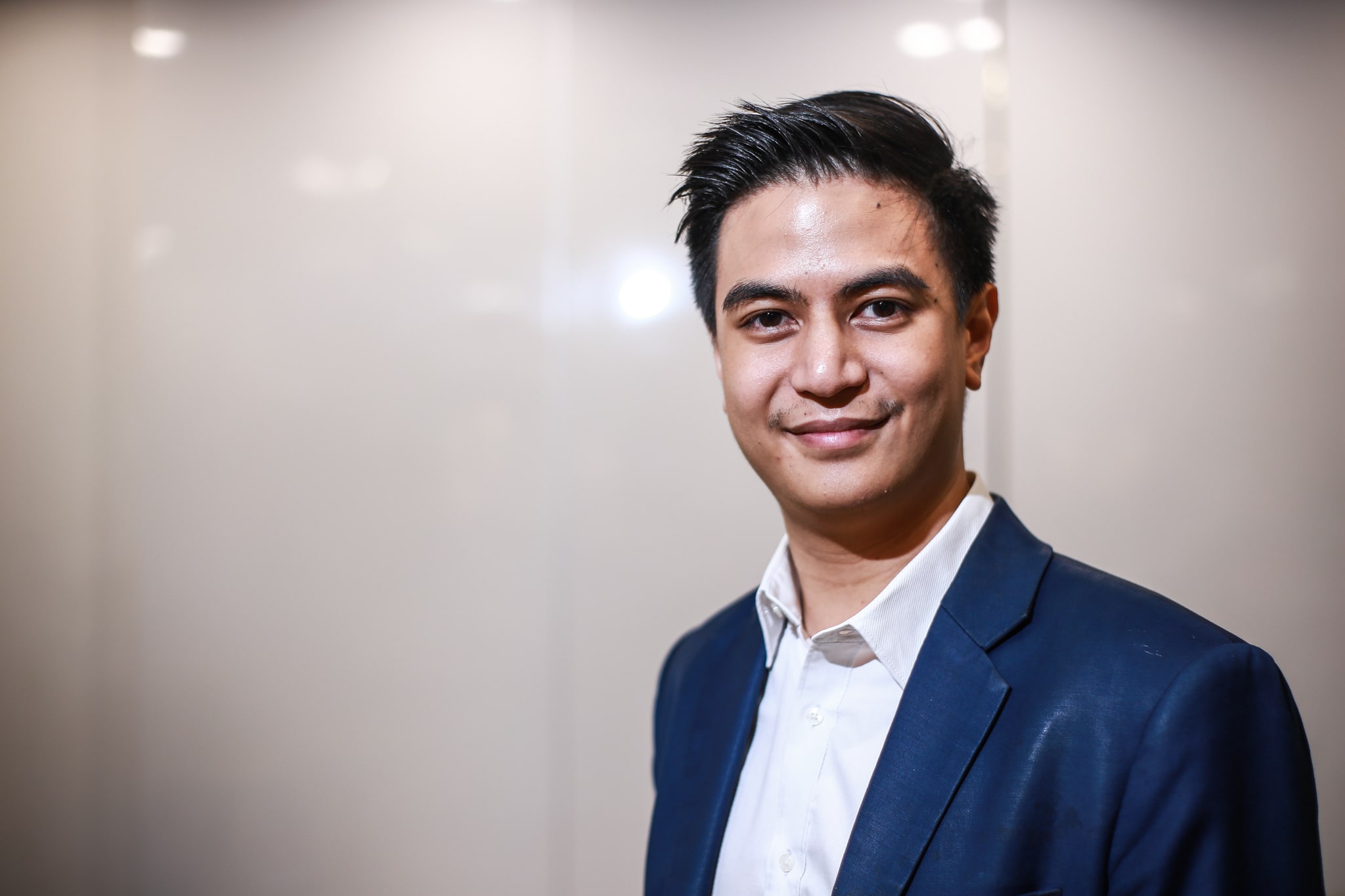
Mr. Parit Wacharasindhu, or “I-Tim”, the founder of StartDee as the Netflix of Thai education
Mr. Parit Wacharasindhu, or “I-Tim”, the founder of StartDee as the Netflix of Thai education, said that StartDee would like to thank the EEF because many issues had to be decided based on the EEF database, which the goal of both StartDee and the EEF was to reduce the educational inequality. Nowadays, Thai children faced the two inequalities. The first point was that the quality of teaching in each school was not the same between the city and the countryside. The second was the learning channels outside the classroom that it was blocked by a culture of high-cost tutoring schools. We found that the proportion of Thai children who had access to quality education was therefore not very high.
Mr. Parit said that the use of the iSEE system, the first part came from my personal suspicions and I wanted to check my application and wanted to know how poor children accessing StartDee’s applications were. We therefore matched the school data of students using the application with the iSEE data to see how much the school’s percentage of poor children was. It was found that there were schools with 80-100% proportion of poor children. Knowing our target audience allowed us to design learning in accordance with the target group because we knew who we were helping. It can be extended because there were many private sectors ready to support education. We used the EEF data to compare which children had the power of payments. If they were already in the good family, scholarships would be given to others, which we brought every school in our system to compare the proportion of poor children from high to low.
“We found that the pace of the EEF’s work was faster than the government’s work that we were used to. Reducing inequalities didn’t have to give everyone the same thing, but it could give everyone the best. The iSEE tool could help startups such as the StartDee reached that goal,”
Mr. Parit
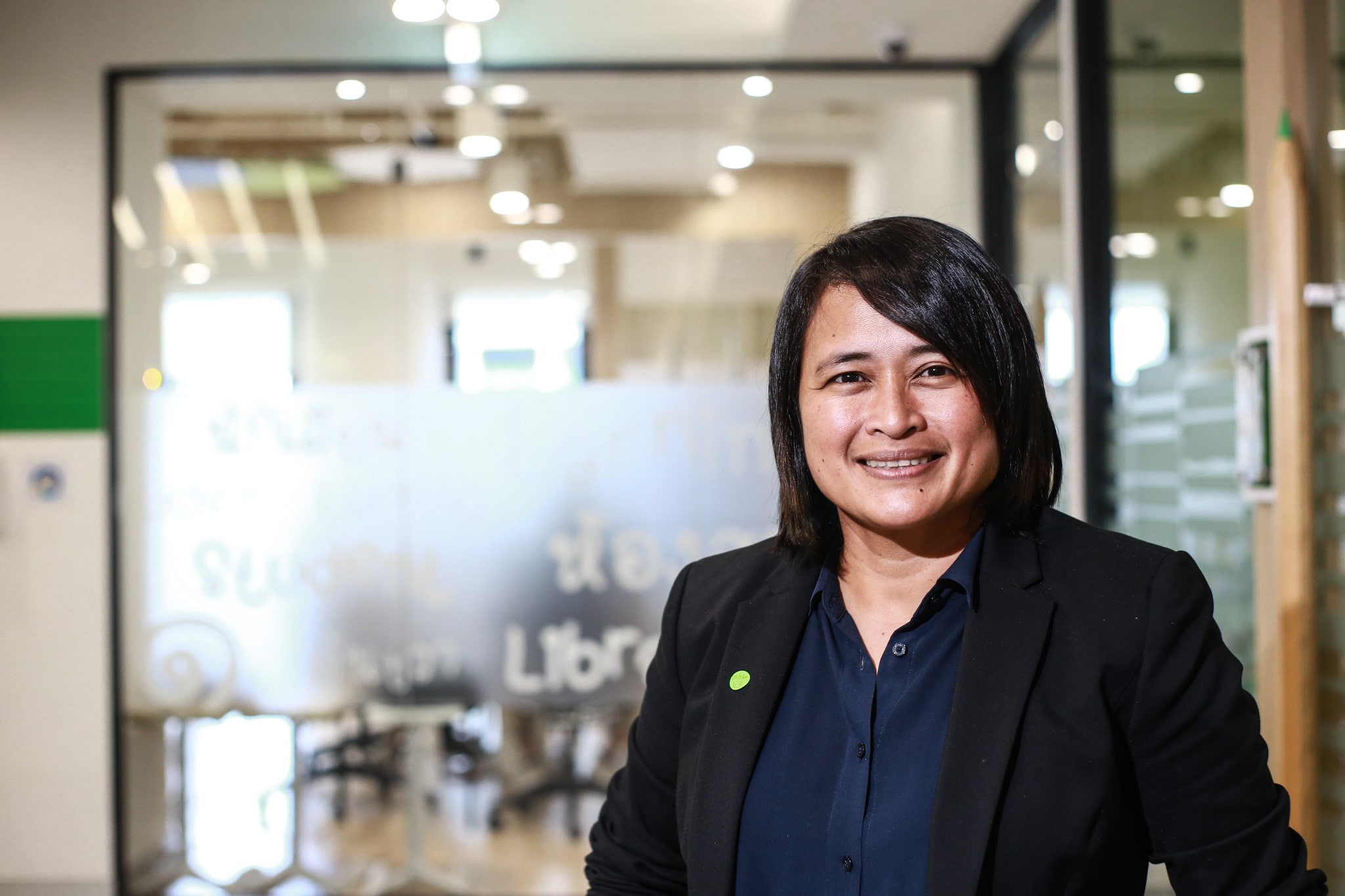
Thapanee Eadsrichai, Assistant Editor of 3Miti News
Thapanee Eadsrichai, Assistant Editor of 3Miti News, said that from her past experience working in news, she encountered problems with children and poor schools, thus presenting various stories to the general public. When someone asked me where I could go to donate to poor children, I couldn’t tell them all and I could tell only where to meet. With the iSEE 2.0 database, we knew that there were, in fact, many poor children and children in need. Moreover, those wanted the government or various agencies go to help.

